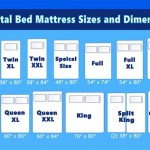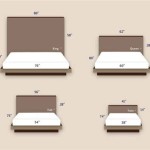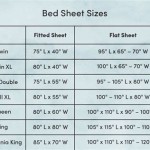How To Move A King Size Sleep Number Bed
Moving a king-size Sleep Number bed requires careful planning and execution due to its size, weight, and specialized components. This article provides a comprehensive guide to safely disassembling, transporting, and reassembling your Sleep Number bed. Proper preparation and adherence to these steps will minimize the risk of damage and ensure a smooth relocation process.
Preparing for the Move: Assembling Necessary Materials and Tools
Before beginning the disassembly process, gather all the necessary materials and tools. This proactive step streamlines the procedure and prevents unnecessary delays. The following items are essential:
Original Assembly Instructions: The original assembly instructions contain specific diagrams and instructions tailored to your particular Sleep Number bed model. Consulting these instructions is paramount for correctly identifying and disassembling components. If the original instructions are unavailable, attempt to locate a digital version on the Sleep Number website or through online forums.
Phillips Head Screwdriver: A Phillips head screwdriver is required to remove screws securing the bed frame and components. Ensure the screwdriver is appropriately sized for the screws to prevent stripping or damaging the screw heads.
Adjustable Wrench: An adjustable wrench may be needed to loosen bolts or nuts that secure certain frame elements. The wrench should be adjustable to accommodate various sizes.
Packing Tape: Packing tape is essential for securing mattress components, air hoses, and other loose items. Using a strong, reliable packing tape helps protect these parts from damage during transit.
Bubble Wrap or Quilted Blankets: Bubble wrap or quilted blankets provide cushioning and protection for fragile components like the air chambers, remote control, and electronic components. Wrap these items thoroughly to prevent scratches, dents, or breakage.
Plastic Bags: Plastic bags are useful for storing screws, bolts, and other small hardware. Label each bag clearly with the corresponding component to facilitate reassembly.
Permanent Marker: A permanent marker allows for clear labeling of boxes and bags. Labeling is crucial for organization and identification during the reassembly process.
Moving Blankets: Moving blankets protect larger bed components, such as the bed frame sections and mattress encasement, from scratches and dents during transport. Wrap these items securely with moving blankets and tape.
Dollies or Furniture Sliders: Dollies or furniture sliders are beneficial for moving heavy components across flat surfaces. These tools reduce strain and prevent damage to floors.
Vacuum Cleaner/Shop Vac: A vacuum cleaner or shop vac is necessary to deflate the air chambers completely. This step is crucial for minimizing the size and weight of the mattress and preventing damage to the air bladders.
Disassembling the Sleep Number Bed: A Step-by-Step Guide
The disassembly process requires a systematic approach to ensure the bed is taken apart correctly and safely. Follow these steps carefully to avoid damaging any components.
Deflating the Air Chambers: Begin by disconnecting the remote control from the bed. Using the remote, initiate the deflation process for both air chambers. Allow sufficient time for the chambers to deflate as much as possible using the remote's automated feature. Once the chambers are significantly deflated, use a vacuum cleaner or shop vac to extract any remaining air. Place the vacuum hose directly onto the inflation valve and seal the connection with your hand to maximize suction. Continue until the chambers are completely flat.
Disconnecting the Air Hoses: After the air chambers are fully deflated, carefully disconnect the air hoses from the air chambers and the pump unit. These hoses typically have quick-connect fittings. Gently press the release mechanism on the fitting and pull the hose free. Avoid yanking or pulling forcefully, as this can damage the fittings or the hoses themselves. Once disconnected, coil the hoses neatly and secure them with packing tape to prevent tangling. Place the coiled hoses in a plastic bag or box and label it clearly.
Removing the Mattress Encasement and Comfort Layers: The mattress encasement typically consists of a zippered cover surrounding the air chambers and comfort layers. Unzip the encasement and carefully remove the comfort layers. These layers may include foam padding or other materials. Wrap each comfort layer individually with bubble wrap or quilted blankets and secure with packing tape. Place the wrapped layers in a box or wrap them securely with moving blankets.
Disassembling the Bed Frame: The bed frame structure varies depending on the Sleep Number model. Generally, the frame is assembled using screws, bolts, or interlocking components. Using the appropriate screwdriver or wrench, disassemble the frame piece by piece. As you remove each section, wrap it with moving blankets and secure with packing tape. Keep all screws, bolts, and hardware organized in labeled plastic bags.
Packing the Components: Once all the components are disassembled, pack them carefully for transport. Use sturdy boxes and plenty of packing material to protect the items from damage. Label each box clearly with its contents and the room in which it belongs in the new location. This will facilitate the reassembly process.
Secure the Pump: The Sleep Number bed's pump is a crucial component and requires special attention during packaging. Wrap the pump securely with bubble wrap and place it in a sturdy box. Ensure the box is filled with packing peanuts or other cushioning material to prevent the pump from shifting during transport. Label the box clearly as "Fragile - Pump Unit."
Transporting the Sleep Number Bed: Ensuring Safe Delivery
Proper transportation is crucial to prevent damage to the disassembled Sleep Number bed. Several factors must be considered during this phase.
Protecting Against Moisture: Moisture can damage the mattress encasement, comfort layers, and electronic components. If transporting the bed in an open truck or trailer, protect it with a waterproof tarp or plastic sheeting. Even in enclosed moving trucks, it is advisable to take precautions against potential leaks or spills.
Securing the Load: Secure all boxes and components within the moving truck to prevent shifting during transit. Use straps or ropes to tie down the boxes to the truck's walls or floor. This will minimize the risk of items falling and being damaged.
Using Professional Movers: Consider hiring professional movers experienced in handling Sleep Number beds. These professionals possess the necessary equipment and expertise to disassemble, transport, and reassemble the bed safely and efficiently. While this option may be more expensive, it can save time and reduce the risk of damage.
Documenting the Condition: Before transporting the bed, document the condition of all components through photographs or videos. This documentation can be useful in case of damage during transit, especially if using a moving company. In the event of damage, having photographic evidence will assist in filing a claim.
Planning the Route: Plan the transportation route carefully, taking into account factors such as road conditions, traffic congestion, and bridge heights. Opt for a route that minimizes sharp turns and bumpy roads. A smoother ride will reduce the risk of items shifting and being damaged.
Communication with Movers: If using professional movers, communicate clearly your expectations and concerns regarding the handling of the Sleep Number bed. Point out any particularly fragile components and emphasize the importance of careful handling. Open communication will ensure that the movers are aware of your specific needs.
Loading and Unloading: When loading and unloading the bed components, exercise caution to avoid dropping or bumping the items. Use a ramp or loading dock if available. Lift heavy items using proper lifting techniques to prevent injuries. Enlist the help of others to lift and carry bulky or heavy components.
Climate Control Considerations: Extreme temperatures and humidity can affect the mattress and its components. If the bed will be stored for an extended period during the move, consider using a climate-controlled storage facility to protect it from damage.
Insurance Coverage: Review your insurance coverage to ensure that your belongings are adequately protected during the move. Check if your homeowner's insurance covers damages incurred during transit. If using a moving company, verify their insurance coverage and claim procedures.
By adhering to these guidelines for preparing, disassembling, and transporting the Sleep Number bed, the relocation process can be managed safely and efficiently. Careful planning and execution are key to preserving the integrity of the bed and ensuring a comfortable sleep experience in the new location.

How To Move A Sleep Number Bed Frame Very Easy Youtube

The Correct Way To Move And A Sleep Number Mattress

How To Move A Sleep Number Flexfit Base Youtube

The Correct Way To Move And A Sleep Number Mattress

Sleep Number P5 Bed Unbox Assembly

How To Disassemble A Sleep Number Bed For Moving Do You

Everything You Need To Know About S Beds Sleep Number

How To Disassemble A Sleep Number Bed For Moving

I8 S Bed Sleep Number

Split King Mattresses Sleep Number








